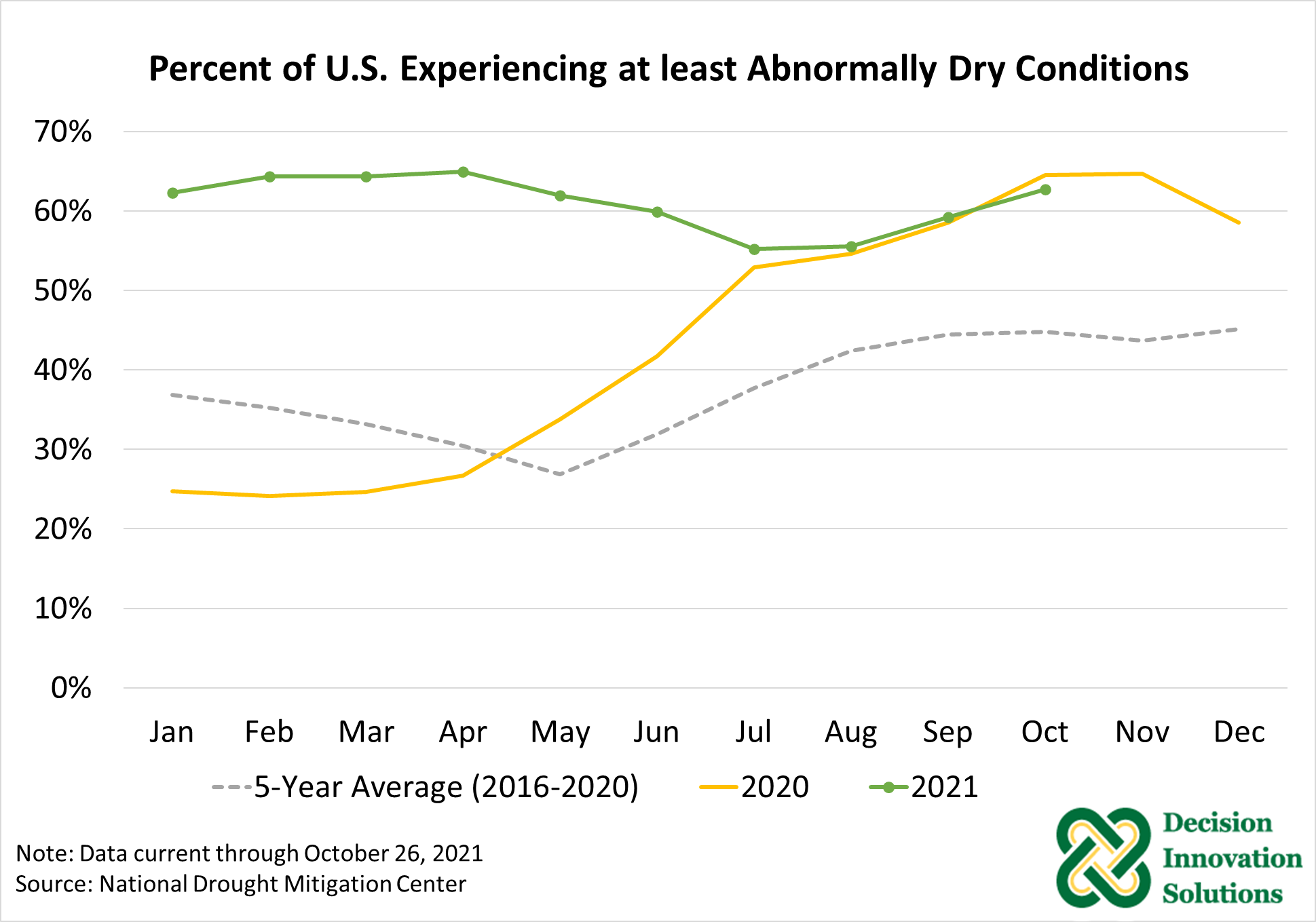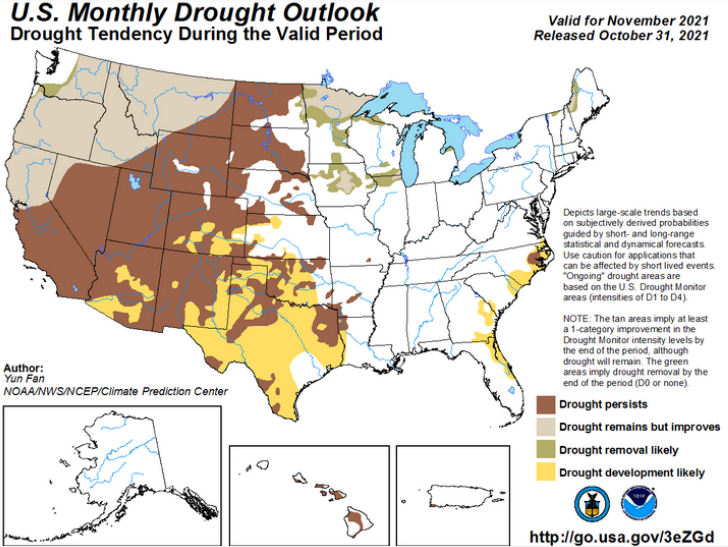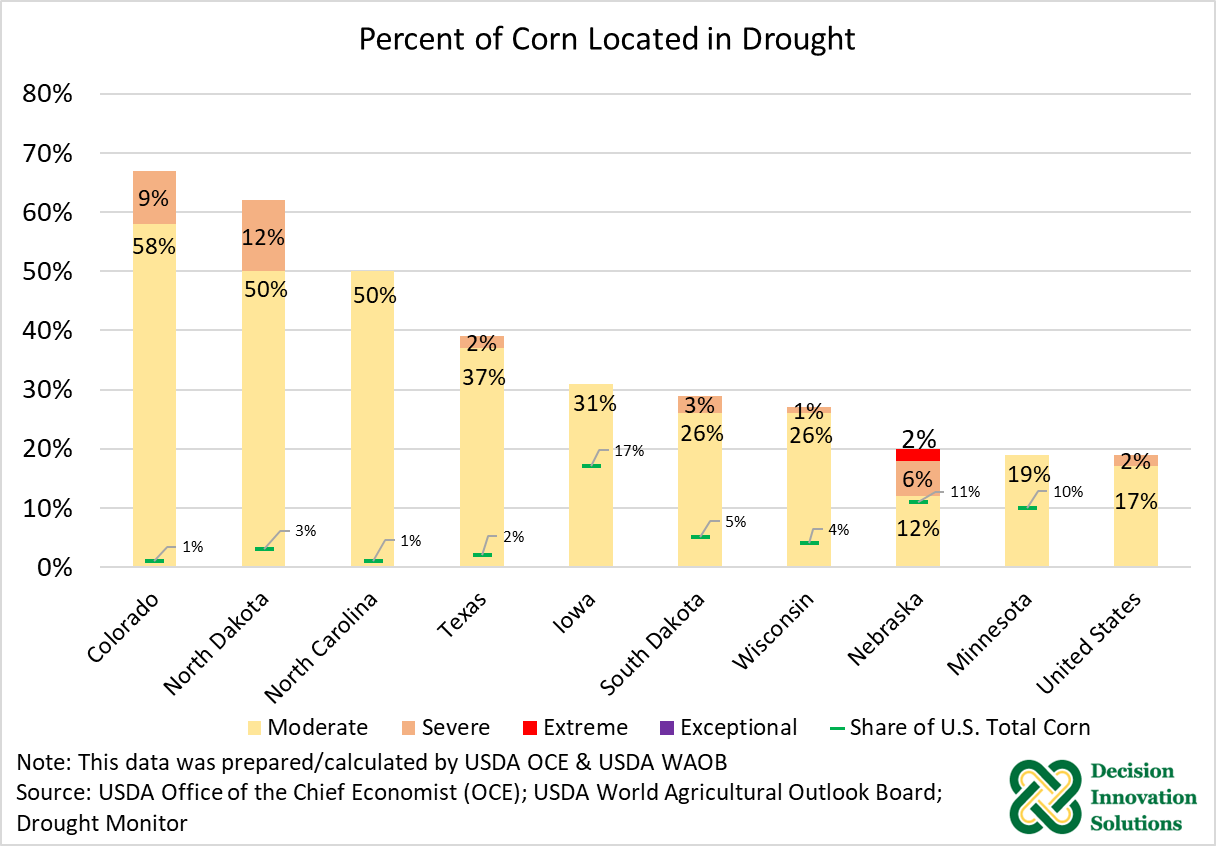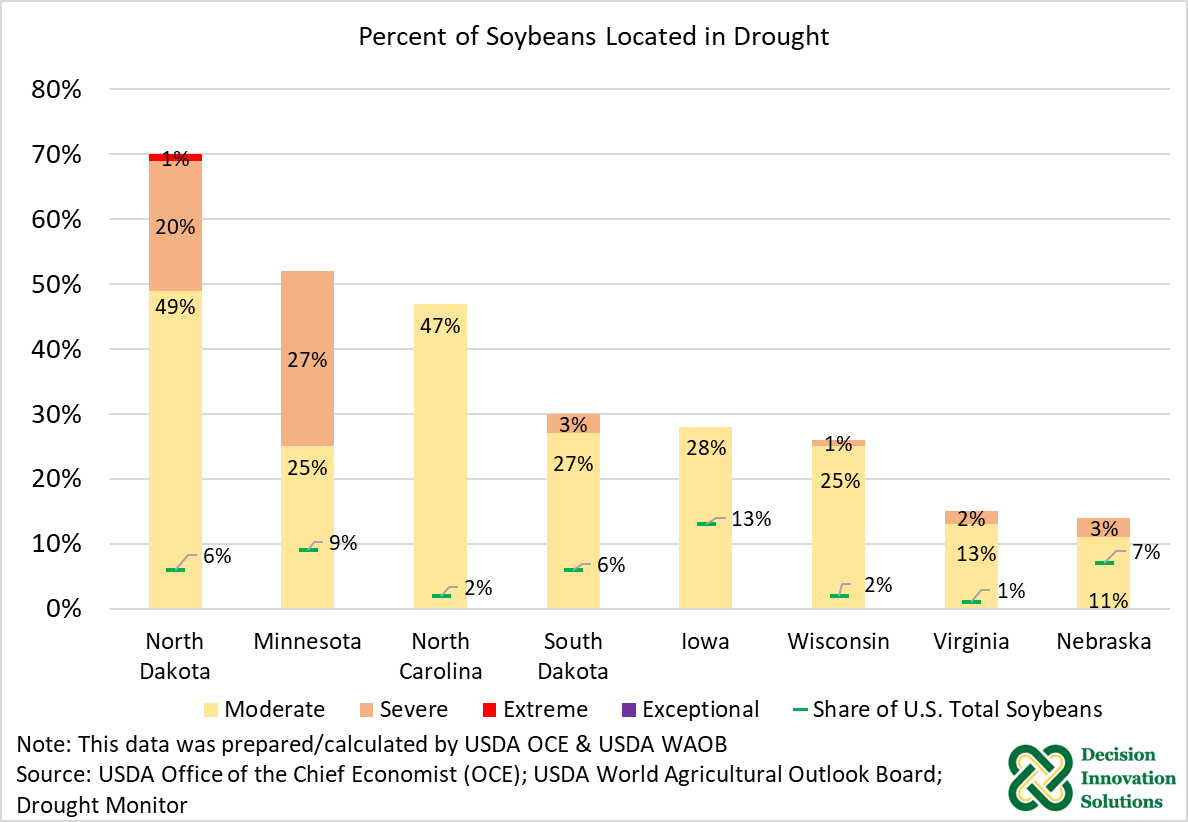Compared to recent years, U.S. rainfall data indicate 2021 as one of the driest. A ten-year high for exceptionally dry conditions was achieved in March, April, and May. Furthermore, as of October 26, 2021, 63% of the U.S. was experiencing conditions ranging from abnormally dry to exceptionally dry (See Figure 1). The west, northwest, and southwest regions of the U.S. have been experiencing the most severe drought conditions (See Figure 2). Fortunately, recent precipitation across the northwestern U.S. has led to some drought relief overall.
 Figure 1: Percent of U.S. Experiencing at Least Abnormally Dry Conditions
Figure 1: Percent of U.S. Experiencing at Least Abnormally Dry Conditions
 Figure 2: U.S. Monthly Drought Outlook (Source: National Integrated Drought Information System)
Figure 2: U.S. Monthly Drought Outlook (Source: National Integrated Drought Information System)
These drought conditions impact crop irrigation and livestock feed production, subsequently leading to challenges in accessing quality hay and contributing to higher feed costs. Approximately 69% of U.S. cattle are in regions currently experiencing drought (U.S. Drought Monitor; USDA ERS 2021). In the short run, a continued lack of precipitation in these states may result in lower profitability due to higher hay and feed costs on some cattle operations. However, drought impacts on cattle herd numbers generally have a lagged effect, often reflected two or more years later.
Drought conditions increase the potential for crop and pasture damage due to dryness from reduced precipitation, and if conditions persist, dryness further exaggerated by water restrictions and water shortages. As of late October, U.S. corn and soybean acres have also experienced drought with 24% of corn acres and 19% of soybean acres in drought areas (USDA OCE, WAOB).
During the first half of 2021, drought levels in Iowa were above (worse than) the 2016-2020 5-year average; however, by summertime, drought conditions had eased slightly compared to the same time in 2020. Currently – as of October 26 – on average, 74% of Iowa is experiencing at least an abnormal level of drought (See Figure 3). Reports have also circulated regarding lower creek and pond levels in Iowa due to these dry conditions.
 Figure 3: Percent of Iowa Experiencing Drought
Figure 3: Percent of Iowa Experiencing Drought
Recent rainfall has been beneficial for Iowa pasture conditions. In the latest Crop Progress report released by USDA NASS on November 1st, about 27% of pasture conditions in Iowa received a quality rating of poor or very poor – an improvement from 40% about this time last year.
Iowa, first in the nation for corn production and second for soybean production, also ranks among the top five states with the highest percentages of both corn and soybean crop acres under drought conditions. Out of Iowa’s 12.9 million corn acres, approximately 43% are experiencing moderate to severe drought, while 28% of Iowa's 10.1 million soybean acres are experiencing moderate drought (See Figures 4 & 5).
 Figure 4: Percent of Corn Located in Drought
Figure 4: Percent of Corn Located in Drought
 Figure 5: Percent of Soybeans Located in Drought
Figure 5: Percent of Soybeans Located in Drought
While drought has been affecting certain states more severely and for longer periods than others, adapting to drought is certainly a challenge faced by large portions of the U.S. The impacts of this year’s drought are likely to be observed in later USDA reports regarding agricultural production. For now, we will continue to hope for more precipitation across the United States.
Sources
- U.S. Crop and Livestock in Drought Report, U.S. Department of Agriculture's Office of the Chief Economist; National Integrated Drought Information System, released Thursday, November 4, 2021
- National Drought Mitigation Center, U.S. Drought Monitor; University of Nebraska-Lincoln, released Thursday, October 27, 2021
- Ag in Drought Report; USDA Office of the Chief Economist (OCE), and World Agricultural Outlook Board (WAOB), released Thursday, November 4, 2021
- Iowa Crop Progress & condition; USDA NASS; released November 8, 2021

